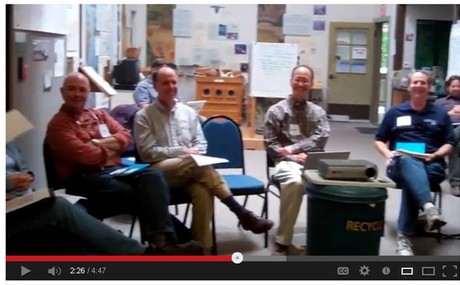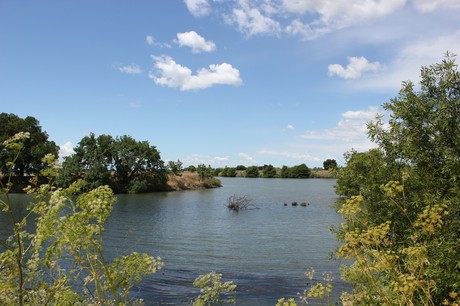Tackling a Wicked Problem: Water Issues!
How the Delta Dialogues Project Is Using Dialogue Mapping to Build Shared Understanding
Jeff Conklin convinced the Delta Conservancy team that forging consensus around the future of the main California water supply was a “Wicked Problem,” and that it would be unethical for them to use strategic planning tools designed for tame problems on this much thornier, more complex, more socially fraught wicked problem. This triggered a unique 6-month initiative dubbed The Delta Dialogues, in which 19 passionate and interested people, representing most of the different constituencies impacted by water planning, agreed to engage in a prolonged dialogue to build a shared understanding of the issues surrounding the future of the Sacramento River and San Joquin River Delta area.
NETTING IT OUT
This is the story about how Dialogue Mapping™ has been used to support a six-month process among litigious stakeholders embroiled in a “Wicked Problem:” What to do to protect the largest source of fresh water in California? This “case study in progress” turns out to be Part 1 of an ongoing effort. We plan to bring you Part 2 in due course. The six-month pilot was successful in building a shared understanding and forging ties among a group of unlikely collaborators (people who had been at each others’ throats for decades). Now that group is continuing into Phase 2: to attempt to develop solutions to seemingly intractable problems.
Here’s a brief video clip in which some of the participants in the Delta Dialogues describe what the process to-date has meant for them.
In this case study, we focus on how Dialogue Mapping played a role in helping participants engage in civil discourse and begin to capture and objectify both the complexity of the wicked problem they are immersed in and the pros and cons of possible actions and policies.
Delta Dialogues
THE WICKED PROBLEM: WATER ISSUES
Fresh water is biggest battleground of all. It’s the scarcest resource that humans need for survival. No wonder that setting policy and coming up with solutions surrounding water is a topic that has been fraught with controversy as long as humans (and other animals) have been on this planet. There’s a famous saying, “whiskey is for drinkin’ and water is for fightin’.” Dealing with water issues is often a “wicked problem1”—one that involves many stakeholders and for which there is no “right solution.”
Cosumnes Preserve
© 2013 Delta Dialogues
Why Is the Sacramento/San Joquin River Delta So Vital to California’s Future?
The river delta and estuary formed by the Sacramento River and the San Joquin River carry water from the California’s snowy Sierra Mountains to the San Francisco Bay. The Sacramento/San Joquin Delta provides fresh water via federal, state, and local water systems to 25 million Californians. There are 500,000 people who live in the delta area. It includes 500,000 acres of fertile agricultural land and attracts 12 million visitors per year for recreation. The income from all this activity is estimated at $35 billion per year. The delta and the estuary are also home to 55 species of fish (including the Chinook salmon which travel through the delta to their spawning ground) and to over 750 species of birds, other wildlife, and plants. Daniel Weintraub explains the source of the controversies that have swirled around the delta for decades:
“But man long ago perverted nature’s intent, and the Delta now also serves as a massive pumping station for water flowing to Central Valley farms, the Bay Area and Southern California, which gets much of its drinking water from the north. More than 1,000 miles of levees have rechanneled the Delta’s waterways, creating artificial islands with rich soil that is ideal for farming.
Now, in a twist, man’s restructuring of the Delta is itself threatened, by man and nature.
The courts and government regulators have slowed the flow of water out of the Delta to protect endangered species and the habitat on which they depend. Water users from north and south fume at this intervention. But it is nothing compared to what might happen some day, what many experts say will happen one day. The next big flood or earthquake could damage those aging levees, and if the levees go, the freshwater now traveling south and west would be contaminated by saltwater, rendering it useless for drinking or irrigation. The Delta islands and their farms would be inundated, perhaps never to return.”
~ Daniel Weintraub, A New Conversation about Water, HealthyCal.org
It’s no wonder, then, that this area has been a political, economic, and environmental hot potato for decades...
(Download the PDF to read the entire article.)
1) See How to Address “Wicked Problems:” Use Dialogue Mapping to Build a Shared Understanding and Evolve a Group’s Thinking, by Patricia B. Seybold, May 23, 2013.
Sign in to download the full article
0 comments
Be the first one to comment.





